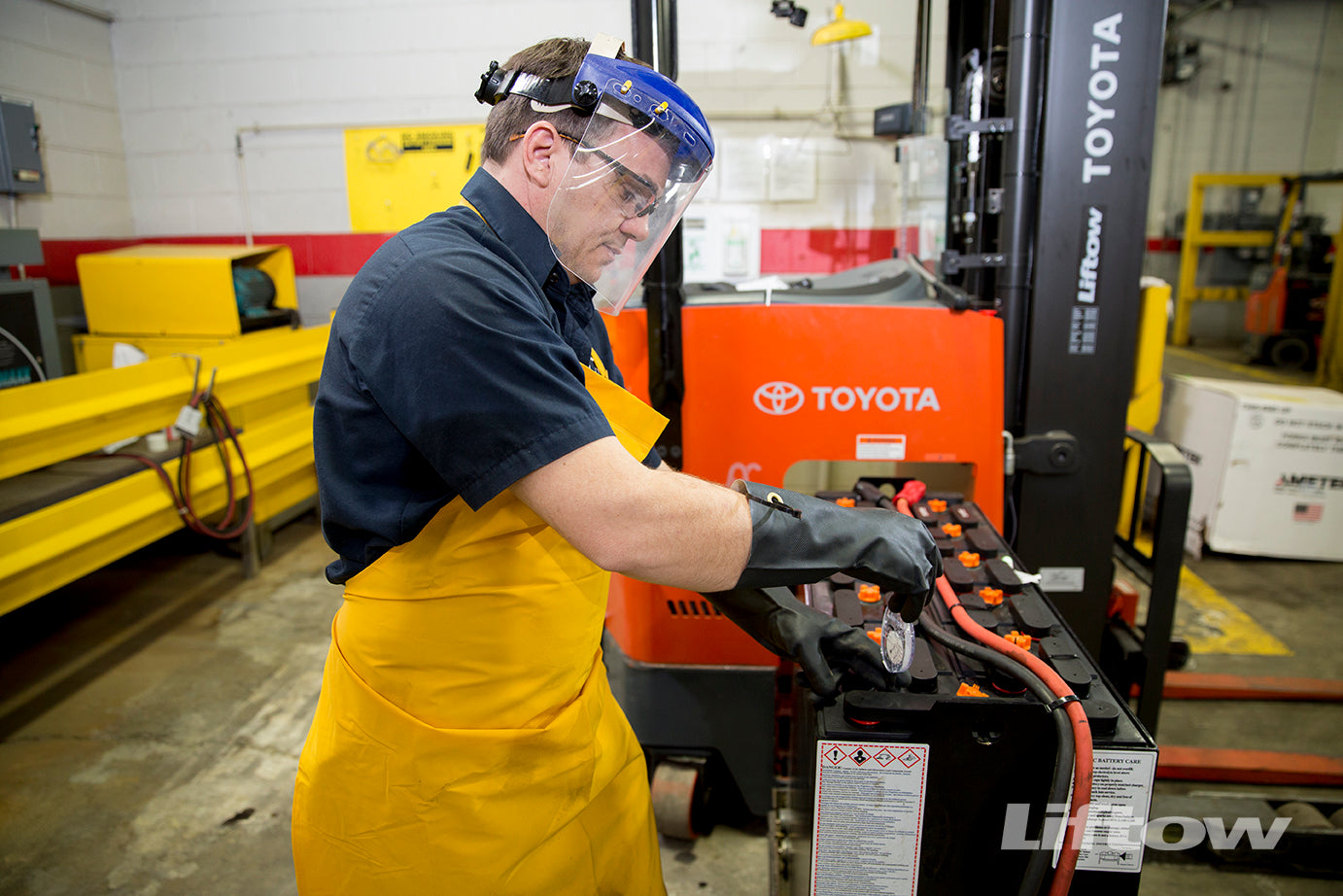
Forklift Personal Protective Equipment
As an employer, you know it’s in your best interests to protect your employees from injury, illness, distraction and discomfort while on the job. Employees who are rushed, have compromised hearing or visibility, are too hot or too cold, or have troubling maintaining the postures required by their tasks all represent a clear threat to themselves and others. They also represent potential accidents, lawsuits, damaged equipment and lost productivity. So while you work hard to invest in safe and reliable equipment, make sure you’re also providing adequate protective gear that’s tailored to the needs of every role in your workplace.
Temperature extremes.
Employees who work under cold, windy, wet or dangerous conditions will need adequate protection that keeps them dry and warm without impeding their motion. The most important rule for weather protection is simple: stay flexible and change what isn’t working. If your employees complain, listen and take action. If their gloves are too bulky for meticulous computer work, find a new model or brand made with lighter weight materials. If their coveralls are not warm or durable enough, make changes.
Hearing and visibility.
Employees who work with sparks or flying objects need mandatory eye protection, and employees who work in high-decibel environments must have access to ear guards. But these guards should not be so bulky or occluded that they prevent some hazards while creating others. Employees who need full visibility and full environmental awareness should have a say in the brand and model of safety equipment adopted by the company.
Protective gloves and boots.
Warehouse work typically requires work gloves and steel toed boots, which can protect the feet from falling objects and the hands from contact with dangerous surfaces. Again, keep a close eye on the equipment you choose and its functionality under your specific conditions. If your chosen gloves are wearing out too fast or not adequately protecting employees from caustic materials, hot surfaces or rough conditions, make changes.
Pads and helmets.
Hard hats and appropriate padding can protect employees from sudden trauma (falling objects or impacts to the head), and also long-term musculoskeletal stress (also called repetitive stress). Pads should be applied wherever joints and bony areas—such as the elbows, knees and forearms—come in contact with hard surfaces. If employees are required to use their arms or shins to push, brace, block or stabilize hard objects, these areas should be padded.
Heat conditions.
Heat can be a challenging hazard, since more layers of heavy equipment can sometimes compound the dangers of heat stress. Make sure employees are protected from the damaging UV rays of the sun, even if this means more layers instead of less. And keep in mind that equipment provides only one aspect of protection; other aspects may involve frequent breaks and access to drinking water.

